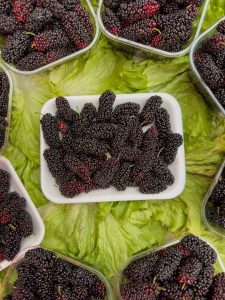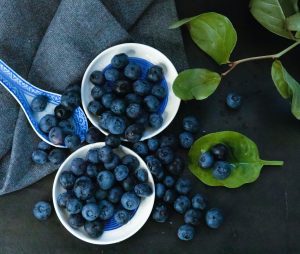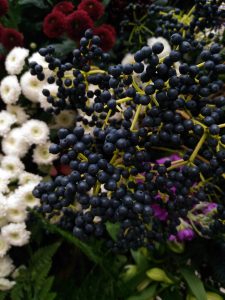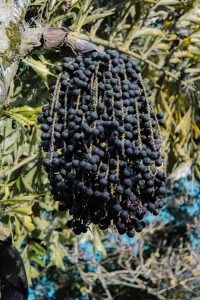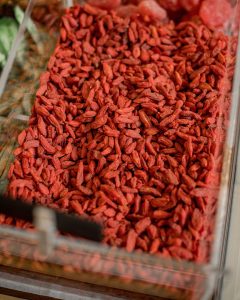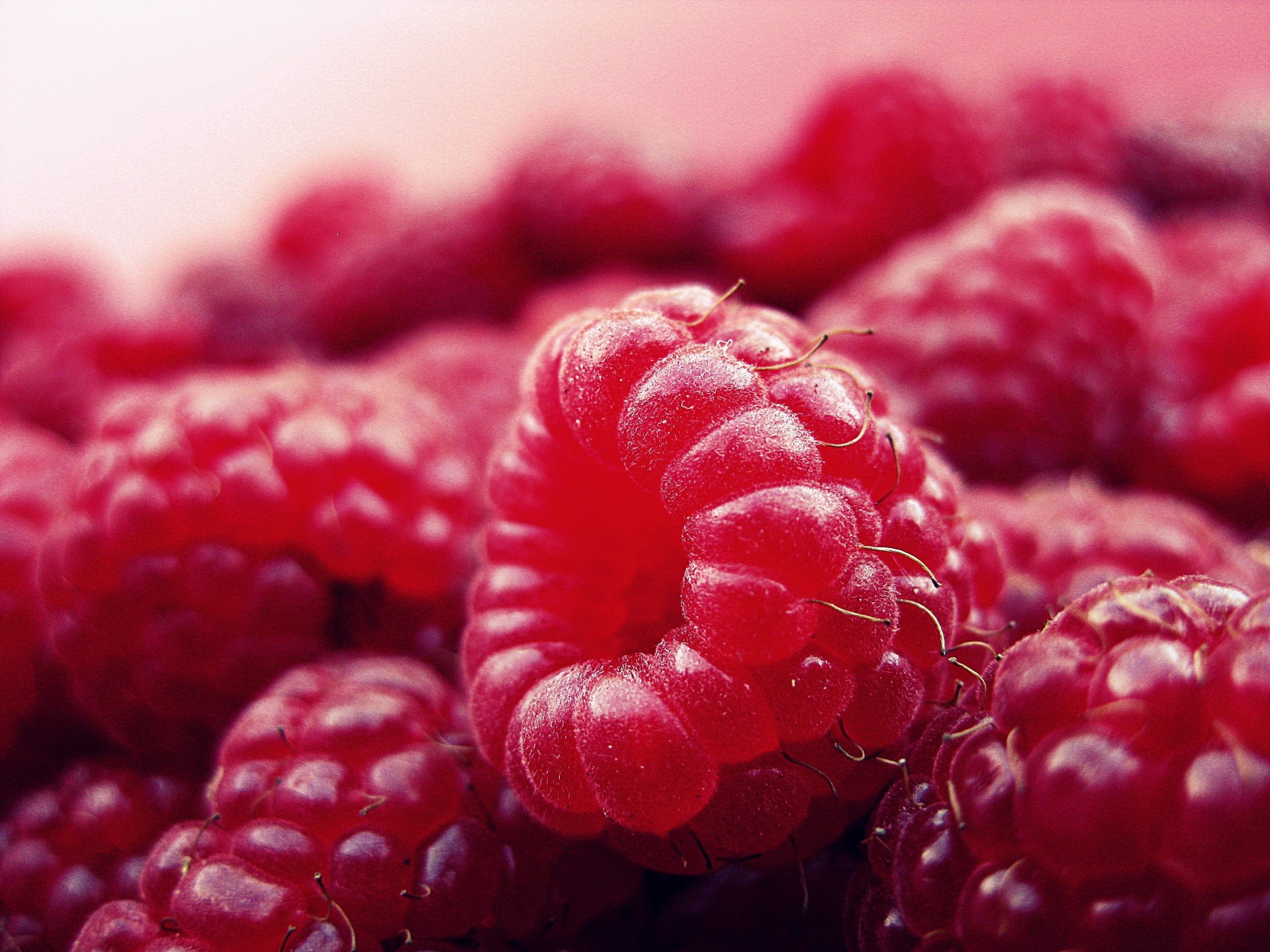
What Are Raspberries?
Raspberries are small, flavorful fruits that belong to the Rubus genus of the rose family. These berries are known for their vibrant color, typically ranging from red to black, and are composed of numerous small drupelets clustered around a central core, giving them a distinctive, textured appearance. Raspberries are rich in vitamins, minerals, and antioxidants, contributing to their health benefits.
These berries thrive in temperate climates and are cultivated worldwide. There are several varieties of raspberries, including red, black, purple, and golden, each with its own unique flavor profile. Raspberries are versatile in culinary applications, commonly used in desserts, jams, sauces, and fresh in salads. They are celebrated not only for their sweet-tart taste but also for their nutritional value, including dietary fiber, vitamin C, manganese, and various antioxidants. Raspberries are often enjoyed during their peak season in late spring and early summer but are available year-round due to modern cultivation and distribution methods.
Why Do We Eat Raspberries?
People eat raspberries for a combination of their delicious taste, nutritional richness, and potential health benefits. Here are some reasons why raspberries are a popular and enjoyed fruit:
- Rich in Nutrients:
- Raspberries are a nutrient-dense fruit, containing essential vitamins such as vitamin C, vitamin K, and manganese. They are also a good source of dietary fiber.
- Antioxidant Content:
- Raspberries are packed with antioxidants, including quercetin, ellagic acid, and anthocyanins. These compounds help combat oxidative stress and inflammation in the body.
- Heart Health:
- The antioxidants and fiber in raspberries contribute to cardiovascular health. They may help lower blood pressure, reduce cholesterol levels, and support overall heart function.
- Weight Management:
- The high fiber content in raspberries aids in satiety, making them a satisfying and healthy snack for those looking to manage their weight.
- Digestive Health:
- The dietary fiber in raspberries promotes a healthy digestive system by preventing constipation and supporting regular bowel movements.
- Versatility in Culinary Use:
- Raspberries can be enjoyed fresh, added to salads, used in desserts, jams, and sauces, or blended into smoothies. Their versatility makes them a popular ingredient in various culinary creations.
- Delicious Taste:
- Raspberries have a sweet-tart flavor that many people find appealing. Their natural sweetness makes them a delightful addition to both sweet and savory dishes.
- Seasonal Enjoyment:
- Raspberries are often at their peak during late spring and early summer, making them a seasonal treat enjoyed in a variety of dishes during this time.
- Cultural and Culinary Significance:
- Raspberries hold cultural significance in different regions and are featured in various culinary traditions and festivals.
Overall, the combination of taste, nutritional benefits, and culinary versatility makes raspberries a beloved and widely consumed fruit, enjoyed both fresh and in various culinary preparations.
When Do We Eat Raspberries?
Raspberries are typically consumed during their peak season, which varies depending on the region and climate. Here are some general considerations regarding when people commonly eat raspberries:
- Late Spring to Early Summer:
- Raspberries are often in season during late spring and early summer, typically from May to July in many temperate regions. During this time, they are at their peak freshness, flavor, and abundance.
- Harvest Time:
- Raspberries are best enjoyed when freshly harvested. Depending on the variety and location, the harvest time may slightly vary. It’s common for people to pick or purchase raspberries at local farms or markets during this period.
- Year-Round Availability:
- Due to advancements in cultivation practices and global trade, raspberries are available year-round in many grocery stores. They might be imported from regions where they are in season or grown in greenhouses to extend availability.
- Processed Products:
- Raspberries are also enjoyed in various processed forms throughout the year. This includes frozen raspberries, raspberry jams, sauces, and dried raspberries, allowing for consumption beyond the fresh fruit’s natural season.
- Desserts and Culinary Creations:
- Raspberries are commonly used in a variety of desserts, including pies, tarts, cakes, and as a topping for ice cream or yogurt. They are also added to salads, blended into smoothies, or incorporated into savory dishes.
- Culinary Events and Festivals:
- Raspberries are often featured in culinary events and festivals that celebrate the harvest season. These events showcase creative recipes and dishes that highlight the versatility of raspberries.
While late spring and early summer are prime times for enjoying fresh raspberries, advancements in agricultural practices have extended their availability, allowing people to enjoy these berries in various forms throughout the year.
Ingredients of Raspberries
Raspberries, being a natural fruit, don’t have a list of ingredients as they are whole and unprocessed. However, they are composed of various components that contribute to their nutritional profile. Here are the main components of raspberries:
- Water:
- Raspberries have a high water content, contributing to their juiciness.
- Carbohydrates:
- The majority of the calories in raspberries come from carbohydrates, primarily in the form of natural sugars, such as fructose.
- Dietary Fiber:
- Raspberries are an excellent source of dietary fiber, promoting digestive health and providing a feeling of fullness.
- Vitamins:
- Raspberries contain essential vitamins, including vitamin C, vitamin K, and a variety of B-complex vitamins such as B1 (thiamine), B2 (riboflavin), B3 (niacin), B5 (pantothenic acid), and B6.
- Minerals:
- Raspberries provide various minerals, including manganese, copper, iron, magnesium, potassium, and calcium.
- Antioxidants:
- Raspberries are rich in antioxidants, including quercetin, catechins, and ellagic acid. These compounds help combat oxidative stress in the body.
- Phytonutrients:
- Phytonutrients are plant compounds that contribute to the health benefits of raspberries. They include flavonoids, tannins, and other bioactive compounds.
- Natural Sugars:
- Raspberries contain natural sugars, contributing to their sweet taste. However, they have a relatively low sugar content compared to some other fruits.
It’s important to note that the nutritional composition of raspberries can vary based on factors such as ripeness, cultivation methods, and specific raspberry varieties. Overall, raspberries are a nutrient-dense fruit, offering a mix of vitamins, minerals, fiber, and antioxidants.
Types of Raspberries
There are various types of raspberries, each with its unique characteristics, flavor profiles, and growing conditions. Raspberries are generally classified into two main types: summer-bearing (floricane-fruiting) and everbearing (primocane-fruiting). Additionally, within these categories, there are different cultivars or varieties. Here are some common types:
Summer-Bearing Raspberries:
- Red Raspberries:
- ‘Heritage’: A popular cultivar with flavorful red berries, known for its high yield and disease resistance.
- ‘Autumn Bliss’: Produces medium-sized, sweet berries and is known for its late summer to fall harvest.
- Black Raspberries (Blackcaps):
- ‘Jewel’: Notable for its large, sweet black berries and disease resistance.
- ‘Bristol’: A cultivar with excellent flavor and adaptability.
- Purple Raspberries:
- ‘Royalty’: This hybrid between red and black raspberries produces medium-sized, sweet, purple berries.
- ‘Brandywine’: Known for its large, firm berries with a unique wine-like flavor.
Everbearing (Primocane-Fruiting) Raspberries:
- ‘Heritage’:
- While commonly associated with summer-bearing types, ‘Heritage’ is also known for its everbearing nature, producing fruit in both summer and fall.
- ‘Fall Gold’:
- An everbearing cultivar that produces yellow-gold raspberries with a sweet taste, typically in late summer and fall.
These are just a few examples, and there are many other cultivars available, each with its own set of characteristics. When choosing a raspberry variety, factors such as climate, local growing conditions, and personal taste preferences should be considered. Additionally, advancements in breeding continue to introduce new varieties with improved disease resistance, flavor, and adaptability.
Signs of Ripe, Signs of Raw and Signs of Rotten Raspberries
Signs of Ripe Raspberries:
- Color:
- Ripe raspberries display a vibrant, uniform color. For red raspberries, this is typically a rich, deep red; for black or purple raspberries, it’s a dark color.
- Firmness:
- Ripe raspberries are plump and firm to the touch. They should not feel mushy or overly soft.
- Ease of Separation:
- Ripe raspberries should easily separate from the stem when gently pulled, indicating they are ready for harvest.
- Shine:
- Ripe raspberries often have a natural sheen or gloss, indicating freshness and juiciness.
- Sweet Aroma:
- Ripe raspberries emit a sweet and pleasant fragrance. If they have a noticeable aroma, it’s a good sign that they are ripe and flavorful.
Signs of Unripe Raspberries:
- Color:
- Unripe raspberries may have a more subdued or pale color, depending on the variety.
- Firmness:
- Unripe raspberries tend to be harder and less yielding to gentle pressure. They lack the plumpness associated with ripe berries.
- Difficulty Separating from Stem:
- Unripe raspberries may resist separation from the stem, requiring more effort to pick.
- Tart Taste:
- Unripe raspberries may taste tart or underdeveloped compared to their sweet, ripe counterparts.
Signs of Rotten Raspberries:
- Mold:
- Rotten raspberries often develop mold, visible as fuzzy patches or dark spots. Discard raspberries with visible mold.
- Soft or Mushy Texture:
- Rotten raspberries become soft, mushy, or may have a collapsed appearance. If the texture feels off and the berry is no longer firm, it may be spoiled.
- Offensive Odor:
- Rotten raspberries emit a strong, unpleasant odor. If the raspberries smell bad, they are likely spoiled.
- Dark or Discolored Areas:
- Dark spots, bruising, or unusual discoloration are signs of deterioration. Check for these on the surface of the raspberries.
- Leaking Juice:
- Excessive juice or a wet, sticky feel can be a sign of overripeness or spoilage.
When selecting raspberries, look for those that are uniformly colored, plump, and have a sweet aroma. Handle them gently to avoid bruising, and store them in the refrigerator to maintain freshness.
Summary
Raspberries, vibrant and flavorful members of the rose family, are small, aggregate fruits cherished for their sweet-tart taste and myriad health benefits. With colors ranging from red to black and gold, raspberries are composed of tiny drupelets, forming a unique, textured structure. Bursting with vitamins, minerals, and antioxidants, they contribute to heart health, digestive well-being, and overall nutrition. Whether enjoyed fresh during their peak season in late spring and early summer or in various culinary creations year-round, raspberries are versatile. Common varieties include red, black, and purple raspberries, each offering distinctive flavors. Beyond their delightful taste, raspberries are celebrated for their role in desserts, jams, and sauces, embodying both culinary delight and nutritional richness.

